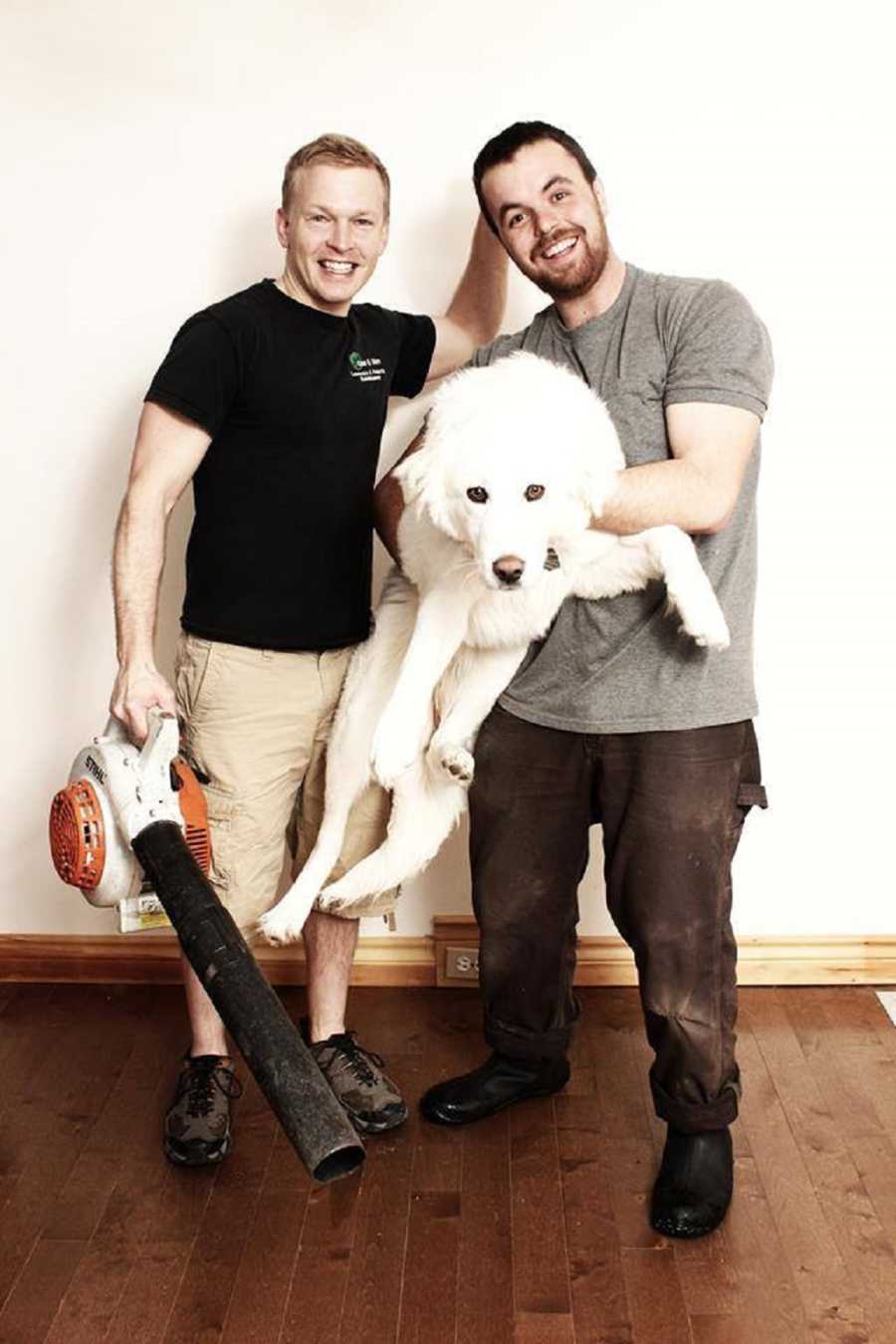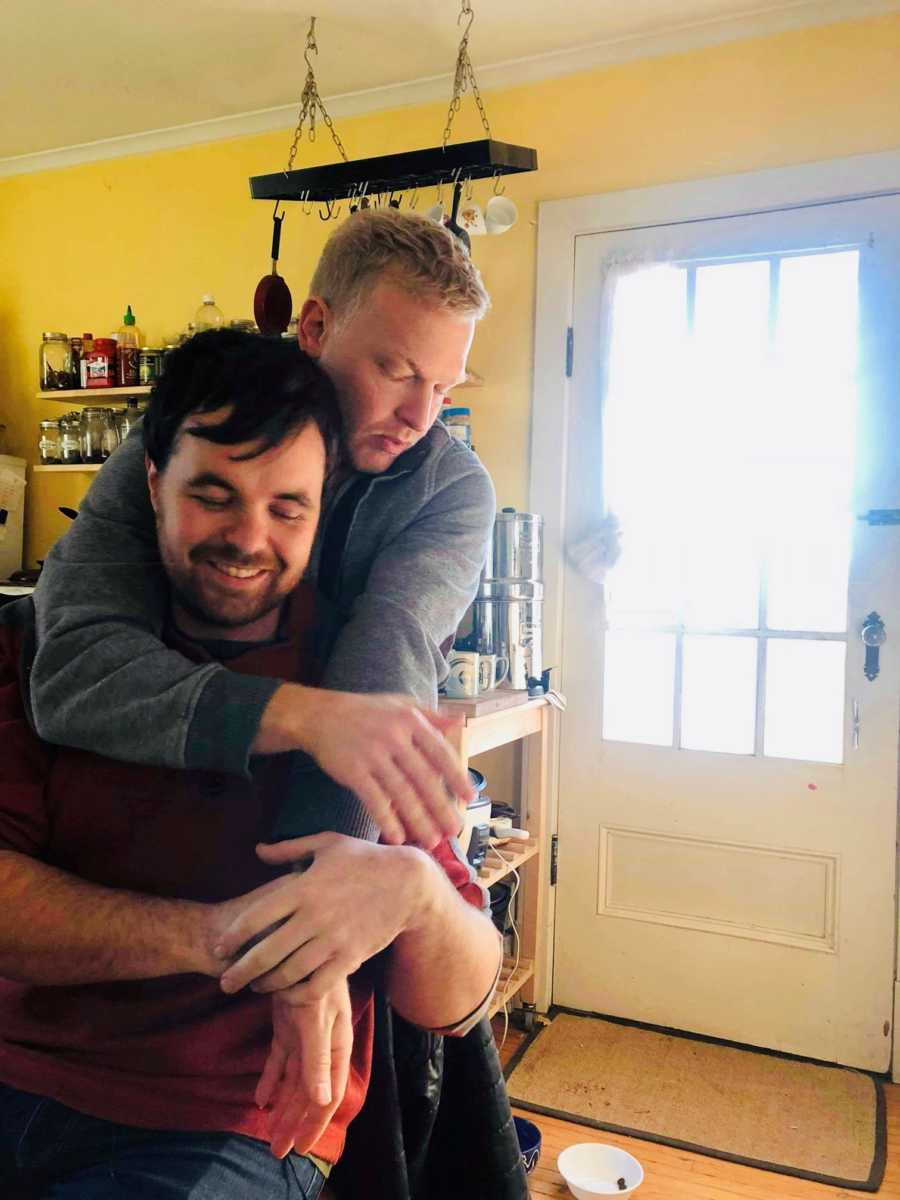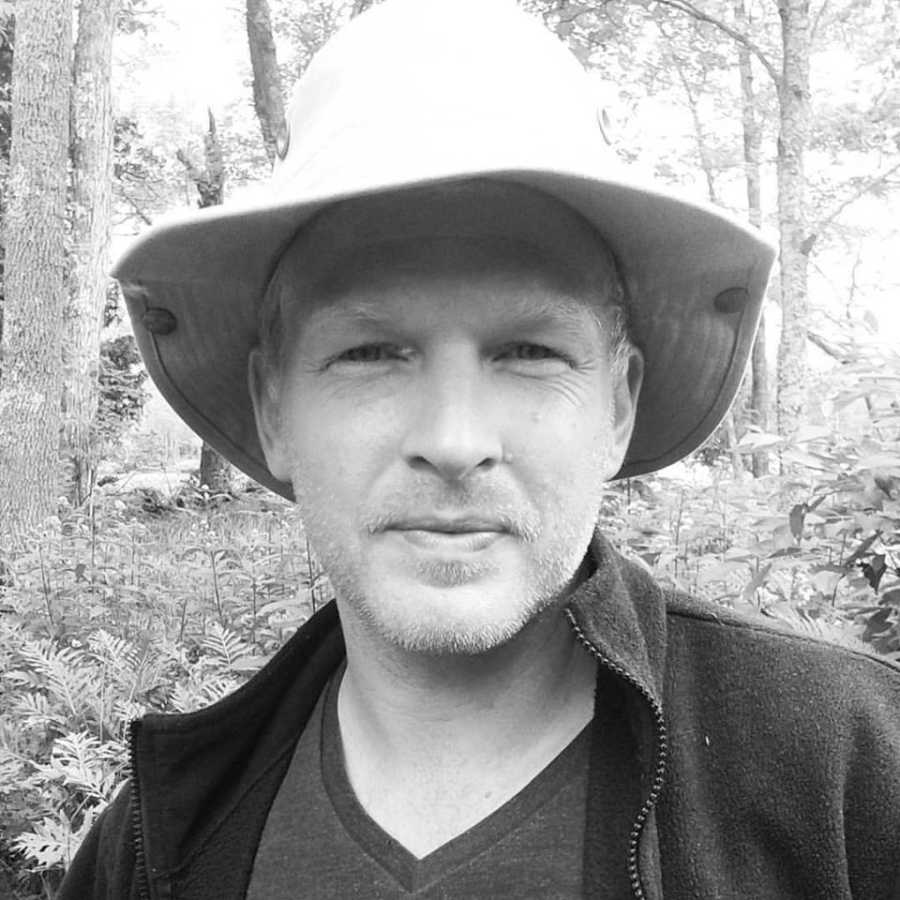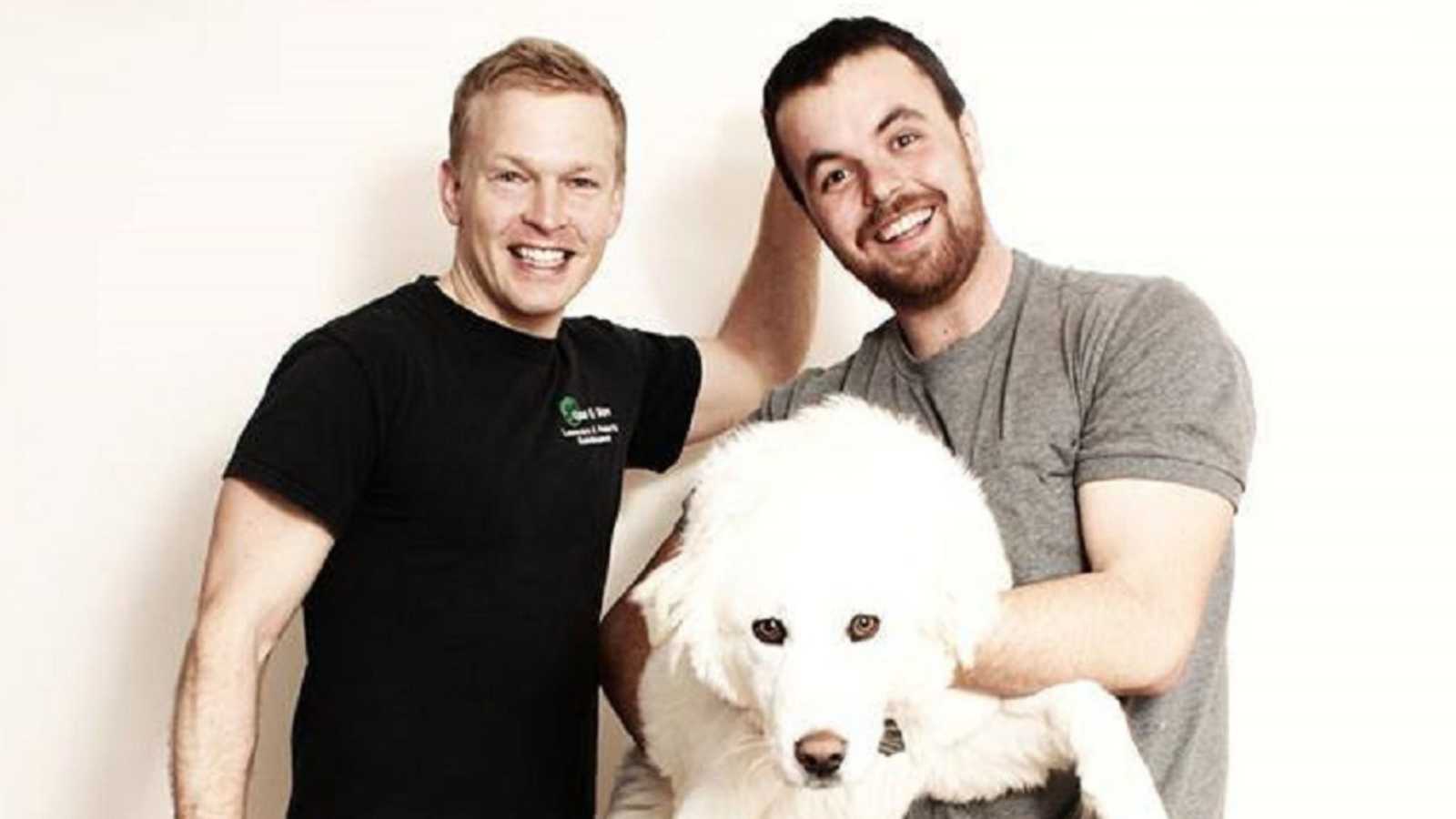“I met Mark 8 years ago. I saw a weird looking poster around town for his martial arts club and went. I fell in love with his teaching style. It was alive – he pushed people, but always with compassion. His enthusiasm for the art just radiated into the room, he couldn’t help himself sometimes – he would get carried away with this excitement that was infectious. He had this gift of being able to motivate his students to improve with a determined energy, while always still being playful, loving, and gracious. When Mark taught, his eyes would get this sparkly glint – even when he was injured and couldn’t show moves, you could see this intense gaze as he watched his students practice – you could see him feeling every move inside himself, looking for the tiniest detail that needed improvement.
We started to connect around meditation. He didn’t know anyone else who meditated at the time, so he would always pull me aside at the end of class’s and go on about what he was learning, his new experiences, new perceptions. He had found something he had been looking for. Truth, peace, a new perspective.
Mark was my best friend. We lived together until last winter, along with my partner Allie, when we moved out of town. He ended up at our place so often though that our roommates joked he lived in our spare room anyways. We would train or go for walks after work most days, and often he would get there before I was done with work, and I would usually find him out in the field, standing beside the cows, trying to make friends with the one with the big horn that always tried to gore him. Or playing chase with the baby cows. I don’t think I’d even seen anyone play tag with cows before.
Mark had a sort of determined intensity about him. We worked a few winters doing snow clearing. Any snow under 3 inch’s we had to use shovels. He determined it was too inefficient to get the blowers out. He developed a series of formations, these synchronized shoveling dances based on the configuration of driveways. I think there were 4 different ones – my favorite was the ‘v’, where we would work up a driveway running in an alternating V pattern, barely missing each other as we swung shovels around to reset our positions. I always looked forward to big snows – driving in his truck at 5 a.m. in snowstorms blaring Krishna Das. He was the same with martial arts – always developing new curriculums, even when he wasn’t teaching.

One time, Mark, Allie and I were at our favorite lunch spot, and we sat down, and he was still by the counter – this line of women was coming out of the kitchen to hug him. He wandered over after a few minutes, with free cookies. Allie asked how he got them, and he just gave that sparkly little grin he had. We formed this great little family for awhile. Every time he came over, when no one was looking, he would write a ‘Ryan and Allie Save the date!’ message on the whiteboard. He knew Allie still wasn’t sure about this whole marriage thing (he would always tell her to just marry me), and he would sit then with this little hidden smile, waiting until she saw it, then burst out laughing when she did. I asked Allie what memories stood out for her. She couldn’t choose – every moment with Mark was special. She talked of last winter solstice when we all went for a run early together at Jacksons Park, and watched the sunrise together while singing songs. Going to the ‘gym’ but instead sitting in the massage chair for an hour. The countless hours in the garden making jokes while having some of the most profound conversations she’d ever had with anyone – big heart talks and being seen. How he would always miss his weekly chores but then do an epic clean once a month and proudly proclaim how clean everything was when we came home. Ju-jitsu lessons in the kitchen while she tried to make breakfast, and how she felt even like an even more loving, empowered human because of him.
That was Mark’s gift. My friendship with Mark was full. This magical combination of deep talks, long walks, playing in the woods, an emotional intimacy that can be really tough to find with other men, and terrible karate movies from the 80’s. We were working through Jean-Claude Van Damme movies before he died.
About 8 months ago, I was training with Mark in the swan centre. We were training strikes, and my elbow on my jab kept flaring out a bit. He got this weird look about him, and he ended up drilling me for an hour and a half. I didn’t think too much of it at the time. Pretty normal for Mark. A few weeks later, he told me that after that session, he had made a noose, and driven out of town with the intention of hanging himself. He said that he had wanted to make sure my jab was perfect before he died.
Mark had obsessive compulsive disorder. 1 in 40 people have OCD, with varying severity. For the most part they remain invisible because they become experts at hiding their illness. Mark’s was severe.
We often see it with things like compulsive hand washing, cleaning, or checking things over and over until they are ‘just right’. Obsessions tend to be focused on things like morality, self-worth, or the future – constant thoughts of trying to figure things out. They become trapped in anxiety, painful thoughts, rituals they feel they can’t control, and the frustrating knowledge that they logically know their fears and compulsive actions make no sense, while surrounded by people who understand even less.

The core of the OCD is a profound difficulty to sit with uncertainty. In Buddhist thought, we call this Anicca – impermanence. And we aren’t great with it. We all have a host of strategies to try to distract ourselves from the unfortunate reality that in this world everything we grasp onto, we will eventually loose. We distract ourselves, create illusory stories, try to build legacies, make monuments. But the OCD brain is different. A paralysis set in. Compulsions become ways the brain tries to find certainty, to get the pain to go away, but they always fail and make things worse. We all have weird thoughts. Maybe I should jump off this bridge, swerve my car into traffic, say something really mean to that really nice person. But our usual reaction is, ‘oh, that’s weird,’ and we move on. The OCD brain doesn’t move on. It can’t. It focus’s. Hones in. Doesn’t let go. The brain starts grasping at anything that will make the anxiety go away, anything that will give a temporary reprieve from the deadly seriousness of what is arising. This is why spirituality was a double-edged sword for Mark – providing him meaning, deep comfort, and community, but also an escape, a promise that everything could shift in an instant, that he could wake up and it would all be better. That’s not how OCD works.
Treatment for OCD is both one of the simplest, and most difficult therapies. At the base, it requires the patient to just sit with the anxiety, with the pain, to not run into compulsions and thinking patterns of trying to ‘figure it out’. Sounds simple enough. But sometimes there is too much pain.
Over the past 3 years, Mark’s OCD got worse. His brain became stuck – his nervous system unable to calm. The anxiety never went away. It was just there, always getting louder and louder. The sympathetic nervous system – what we often call the fight or flight system – was jammed in the on position. It’s not supposed to stay on too long, and there are profound physically damaging effects when it does. Like head pressure. Tinnitus. Not sleeping. Mark would go weeks at a time without sleeping. He described it as a jackhammer in his brain, like his brain was trying to explode out of itself. A constant ringing, all the time, sometimes quieter, but usually deafening. He couldn’t be anywhere where there was no noise, the ringing became too loud. He wasn’t able to mediate anymore. He would always talk of how he just wanted to be able to sit in silence. He would look at me with this desperate look in his eyes, and tell me to appreciate that I could meditate, that I could just sit quietly. How much he missed his little apartment in east city where he would sit quietly by himself for hours. His illness robbed him of that. His nervous system was fraying apart.
He became scared of his own brain. It was a terrifying place for him, full of pain and anxiety. He talked about suicide frequently over the last 2 years. He would go through periods where he was doing better, where he was able to calm the storm that was happening in his head, but even then, he was always scared. Scared that something would trigger his symptoms and he would go another few weeks without sleeping, fall apart some more. He cycled through different ways to deal with it by the day sometimes. For a while it was CBD, then exercise. For a few weeks it was diaphragmatic breathing, then the next week it would be really shallow light breaths, the next trauma release techniques. He tried psychiatric meds. They helped for a few weeks, then made things worse. Acupuncture, cranial sacral, Reiki, various psychotherapies…Each time it would work a bit, he would exclaim that ‘something had shifted’, but then all the symptoms would rush back. This was his OCD brain at work – compulsively searching for new ways to heal, new ways to make the pain go away. This is what rituals can look like in OCD. This is how it can be so unseen.
We talked the day before he died. He was scared. He kept talking about how he felt crazy, how he couldn’t control the things he did. I think this is hard for us to understand. This idea of being terrified of our own brains. We usually at least have the illusion that we’re in control, that we decide what we do. This wasn’t the case for Mark. The inside of his head was a cacophony of exploding pressure, deafening ringing, raging anxiety.
Mark’s suicide is different than most suicides. It has a different story to it. I’m just finishing up my training in psychotherapy at the hospital – I’ve been working in community mental health and crisis intervention for years. I talk to suicidal people on a daily basis. It’s taught me a few more things. There are two basic categories. The first one is the one we’re familiar with, and the one from which we draw our stories of how to understand suicide. Take a basically psychologically healthy person, have a bunch of really terrible things happen to them (we call these risk factors) – job loss, divorce, house burns down, physical illness – you get the idea, subtract the things that keep humans resilient (we call these protective factors), things like family, meaningful work, friends, spirituality, and we have a combination that tends to lead to suicidal thinking and actions. When a bunch of really bad things happen and you don’t have much support, suicidal thinking is a normal response.
And in these cases, the intervention is straightforward. Connect, stay with them. Listen. And it works. This injection of empathy and connection can make an almost immediate difference. Just asking someone if they are having thoughts of suicide can reduce the risk by 90%.
So – when people in this category do die (and these are most suicides), our thoughts go to guilt. It’s always someone’s own choice when they kill themselves, always, but often the system that is supposed to help them doesn’t work. I know this from being part of it. We know that the right person, at the right time, asking the right questions can make all the difference. We must do better as a community in these cases. Reach out, ask. ‘Are you thinking about killing yourself?’ – it’s a simple question that can make a world of difference. I’ve seen it save lives.
This story, however, doesn’t fit for Mark. Mark is part of the second category. Mark had what we call a ‘severe and persistent mental illness’. We’re not as good with people in this category. Asking them if they are thinking about suicide doesn’t help. Talking about suicide would actually make things worse for Mark – it became part of his OCD compulsions. Treatment sometimes works with people with this level of acuity, but it also sometimes doesn’t.
We have this idea that if we just try hard enough, we can change things. We don’t like the idea that some things can’t be changed, no matter how hard the person tries, no matter how much support they have. It makes us deeply uncomfortable to contemplate this. Scared.
When someone gets a severe cancer diagnosis, we will rally around, encouraging them to ‘fight it’. Sometimes they do, and miraculous recoveries happen. Sometimes people fight their hardest, with the best medical support, the most supportive families, and they die anyways. We’re not very good at understanding this in our society – this idea that you can do everything and it’s not enough. It’s easier to blame ourselves, or the person with the illness, or the system.
This was the case with Mark. If someone had something like cystic fibrosis – or a degenerative neuro-muscular disease, these diseases have a timeline. An average death date, say mid 20’s. And when someone makes it past then, and if they choose to kill themselves, we understand. It’s tragic, but no one goes around feeling guilty about how they should have ‘done more’. We can celebrate the life they had, the people they touched. We acknowledge that sometimes pain is just too much, and death is the best option.
Mark had all the protective factors. Work he loved, a supportive family, a caring community of close friends, a deep spirituality. While he wasn’t teaching formally, we had organized little informal 2-3 time a week Ju-Jitsu classes in the Swan centre – selfishly, I just wanted him to teach me more – he was such an incredible teacher – but I wanted him to have that focus. Nothing brought him alive like teaching martial arts. I thought it might help. But ultimately, all that wasn’t enough to hold him in this life. The pain inside was too great. So – what I would suggest is a different story around this death. And he did the rounds in the last few weeks, he reached out to many people who were important to him. And the thinking is inevitable – what if I said something different? Would he still be alive?
What I would suggest is that it wouldn’t have mattered. That Mark was able to stay in this world for so long because of all the wonderful people and communities in his life. That his timeline was extended because of the loving support of the people in this room. But eventually even all that love wasn’t enough to keep him here. As we understand the brain further, it is becoming increasingly difficult to make any meaningful distinction between physical and mental illness. Mark was sick. In his sickness, he led a full life, where he touched countless people’s hearts.
I believe that humans are always trying their best. And our best varies from moment to moment, given the internal resources we have available to us. Aside from my partner, I spent more time with Mark than any other human over the past few years. Mark tried his best. I know this with certainty. I saw it every day. And in the moment that he decided to end his life, that was him doing his best in that moment, with what he had available to him. Mark died with clarity in his mind. He wanted peace. This was the end of his line. That choice has left a hole in my heart, and in so many hearts in this room.
I keep trying to be mad at him. I can’t manage it though. It was always like that with Mark. He’d do the most annoyingly stubborn things, but it was impossible to stay mad at him. There was too much love in his heart.
Rest well brother.”

[If you’re thinking about hurting yourself, please call the National Suicide Prevention Lifeline at 1-800-273-8255 or visit suicidepreventionhotline.org to live chat with someone. Help is out there. You are not alone.]
This story was submitted to Love What Matters by Ryan Salter, Mark’s best friend. This is his Eulogy. Do you have a similar experience? We’d like to hear your important journey. Submit your own story here, and be sure to subscribe to our free email newsletter for our best stories.
Read more stories of families grappling with grief and loss:
Do you know someone who could benefit from this story? Please SHARE on Facebook to let them know a community of support is available.



